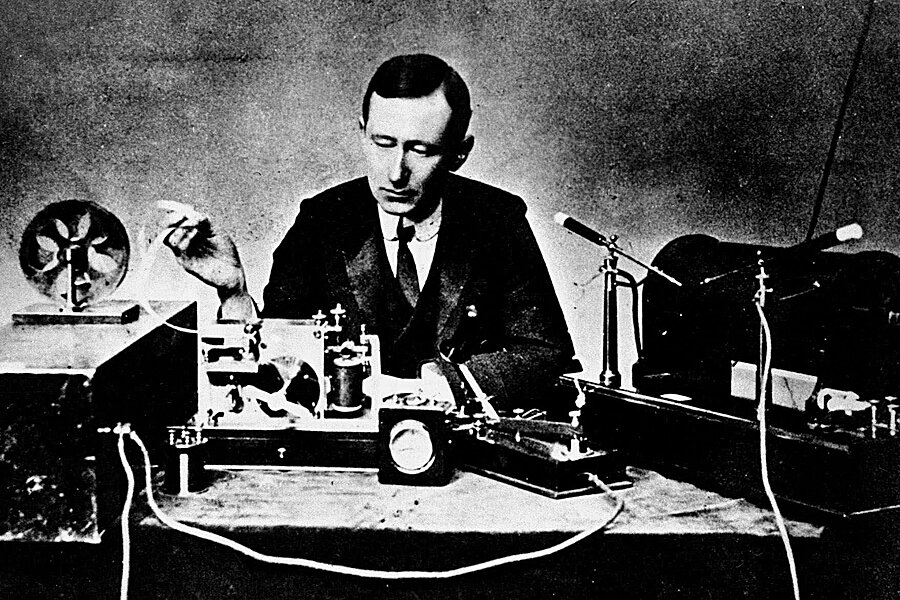Good Reads: From innovation, to Nigeria’s terrorist struggle, to hot peppers
Loading...
What innovation since the wheel – created almost 6,000 years ago – has done the most to shape modern life? Maybe your list would include electricity, or the automobile. But what about sanitation systems, or cement?
In The Atlantic, James Fallows offers 50 answers, which he compiled with input from 12 engineers, technology historians, scientists, and entrepreneurs each giving 25 suggestions. Broad categories of innovation emerged, including innovations that expand human intellect (paper or photography), extend life (penicillin), and allow real-time communication (the Internet) and organizational breakthroughs (the Gregorian calendar and alphabetization), among others.
A majority of the contributors (10 of 12) suggested the top innovation on the list (the printing press), but the rankings are sure to stir debate about the sources and effects of innovation. For Mr. Fallows, he would rank innovations based on which one he would miss more if it didn’t exist. Anesthesia (No. 46 in the list) would be in his top 10, at least higher than the personal computer, which is No. 16.
Boko Haram’s toll on Nigeria
Reporting for National Geographic, James Verini paints a grisly picture of how Boko Haram – an Al Qaeda-linked terrorist group – has wreaked havoc in northern Nigeria, a region already struggling with ethnic and religious violence.
Mr. Verini says that Boko Haram’s gravest toll on Nigeria is existential: “Boko Haram has become a kind of national synonym for fear, a repository for Nigerians’ worst anxieties about their society and where it’s headed,” he writes. “Those anxieties touch on the most elemental aspects of Nigerian life – ethnicity, religion, regional inequities, the legacy of colonialism – and not least is the anxiety that Nigerian leaders are wholly incapable of facing this insurgency, indeed unwilling to face it, much less the social fissures beneath it.”
South China Sea patrol
Almost one-quarter of the $5.3 trillion in global trade that moves through the South China Sea reaches US ports. With several countries – the Philippines, Malaysia, Brunei, Taiwan, and China, among others – claiming ownership of the water, islands, reefs, or shoals in the area, the United States walks a fine diplomatic line.
“The Americans pointedly refuse to take sides in the sovereignty disputes,” Jeff Himmelman writes in The New York Times Magazine. “But China’s behavior as it becomes more powerful, along with freedom of navigation and control over South China Sea shipping lanes, will be among the major global political issues of the 21st century.”
The claims to the territory are as historically and morally complex as the Middle East, he writes. And with China wielding more of its physical force, smaller countries are clinging to whatever threadbare islands and reefs they can. Mr. Himmelman describes eight Filipino marines posted to a rusty, degenerating boat (the Sierra Madre) that ran aground on the Ayungin reef in the Spratly Islands in 1999. From this perch, the men track how many Chinese boats are in the area and what they are doing. The desolate post is the only deterrence to China claiming the territory as its own.
The world’s hottest chili
The hottest chili in the world, according to Guinness World Records, is the Trinidad Scorpion Butch T, measuring 1,463,700 Scoville heat units (based on the food pungency rating system developed by pharmacist Wilbur Scoville in 1912). But not every “chilihead” agrees with the assessment, writes Lauren Collins in The New Yorker.
Exploring the subculture of “superhots” – chilies that surpass 500,000 SHUs – Ms. Collins interviews those who taste and cultivate these chilies in the cutthroat endeavor to create even hotter ones. (For reference: a habanero measures 300,000 SHUs.) They create superhots with names like Carolina Reaper, Armageddon, Naga Morich, and Brain Strain.
“As a leisure activity, superhots offer some of the pleasures of mild drugs and extreme sports without requiring one to break the law or work out,” she writes.
“They are near-death experiences in a bowl of guacamole.”
Kyrgyzstan’s ‘most wanted’
Eugene Gourevitch is a wanted man in three countries: Kyrgyzstan wants him on charges of fraud and embezzlement, Italy for money laundering, and the US for extortion.
In Foreign Affairs, Philip Shishkin traces Mr. Gourevitch’s journey starting with his job as an investment banker in Kyrgyzstan. After the fall of President Kurmanbek Bakiyev’s regime in 2010, he fled to Belarus to avoid prosecution. Because of self-interest, or perhaps a higher moral calling, Gourevitch became an FBI informant on the illegal financial practices of Maxim Bakiyev, the son of Kyrgyzstan’s ousted president, in which he had a role. He is a new breed of post-Soviet antihero, writes Mr. Shishkin.
“At its core, his story shows how business is done in many corners of the post-Soviet world[,] where rapacious hangers-on seek access to global finance and make use of intermediaries and offshore companies. Gourevitch himself says he’s been turned into a scapegoat for sins not of his own making...,” he writes.






